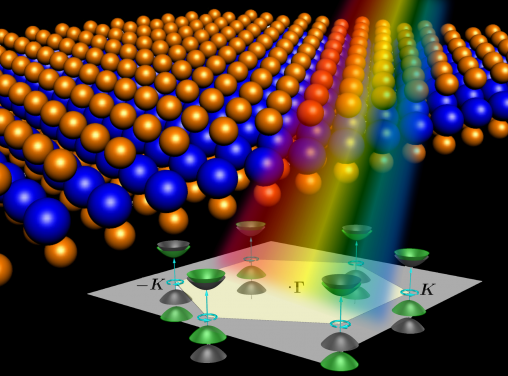Media
HKU-led Physics research team receives funding from Areas of Excellence Scheme, set to uncover emerging technologies of 2D materials to revolutionize electronics, optoelectronics and photonics
12 Jan 2021
A team of physicists, engineers and chemists from across local institutions, led by Chair Professor Wang YAO of Research Division for Physics & Astronomy under Faculty of Science, The University of Hong Kong (HKU), working on the research of fundamentals and emerging technologies of two-dimensional (2D) materials, has recently been awarded a funding of over HK$80 million from the Areas of Excellence (AoE) Scheme 2020/21 (Ninth Round) under the University Grants Committee (UGC). This will facilitate the exploration of fundamental physics in the new realm of two-dimensional atomic crystals and their van der Waals heterostructures with the abundant quantum degrees of freedom (e.g. spin, valley); and to explore quantum engineering of materials and devices in the unprecedented atomically thin 2D geometries, with the aim to revolutionize electronics, optoelectronics and photonics.
The team of leading experts of 2D materials in Hong Kong were assembled to capitalize on this great opportunity. This AoE project is an inter-institutional and interdisciplinary one covering physics, applied physics, chemistry, electrical engineering, comprising 17 scientists from HKU, City University of Hong Kong, The Chinese University of Hong Kong, The Hong Kong Polytechnic University, and The Hong Kong University of Science and Technology.
“We are grateful to UGC for the recognition of our past achievement through the award of this funding, and most importantly for this opportunity to work together as a team to achieve something bigger in this exciting area.” said Professor Yao.
Dean of Science Professor Matthew EVANS extended his heartfelt congratulations to the Project Coordinator and Co-Principal Investigators of this inter-institutional research project. “This is indeed a good start for 2021! We are all exhilarated by the news! I am most delighted to see the concerted efforts of our top-notch physicists and their collaborators in diverse disciplines on developing fundamental research on 2D materials, outracing other cutting-edge research and being recognized through the award of funding in this vigorous exercise,” said Professor Evans.
The development of 2D materials and beyond
The rapid development of information technology has been based on the continuous scaling down of microelectronic devices that improves cost, performance and power. This trend, empirically summarized as Moore's law, is coming to an end because of the intrinsic scale limit of silicon microelectronics. The new era of innovation will be profoundly different, calling for: new material systems to host even smaller devices under new geometry, new heterogeneity, new quantum degrees of freedom to carry information, and new physical principles to process and store information.
Two-dimensional materials have a great potential to revolutionize microelectronics and information technology. The variety of 2D materials feature a wide range of material properties from metal, semiconductors, insulators to magnets and superconductors, as well as exotic physics associated with electrons’ quantum degrees of freedom (spin & valley) that could be exploited to encode and process information more efficiently. Their tiny thickness - just a few atoms at most - promises the ultimate miniaturization of devices, and unparalleled control of materials and device functions. Moreover, 2D materials feature an unprecedented flexibility in their assembly into heterostructures, through which new materials and device functionalities may emerge. This project aims to explore these exciting opportunities for revolutionizing electronics, optoelectronics and photonics, through a concerted effort addressing the fundamental issues from physics, materials synthesis to device engineering based on 2D materials.
Led by pioneers in the field of 2D materials, the team will seek to sustain Hong Kong’s edge in the field through basic and applied research, with a long-term goal of developing new prototype devices that will have application and commercialization potentials for Hong Kong.
Background of the AoE Scheme
The AoE Scheme was launched in 1998. The objective of the Scheme is to support the University Grants Committee-funded universities to build upon their existing strengths and develop them into areas of excellence. A total of 24 AoE projects from various disciplines have been funded in the past eight rounds of exercise.
For the funding results of the Ninth Round Exercise, please visit:
https://www.ugc.edu.hk/eng/rgc/funding_opport/aoe/funded_research/aoe9.html
For details of another AoE project that the Faculty of Science takes part in, please visit:
https://www.scifac.hku.hk/news/news-AoE-metamaterials
Images download and captions: https://www.scifac.hku.hk/press
For media enquiries, please contact Ms Casey To, External Relations Officer (tel: 3917 4948; email: caseyto@hku.hk / Ms Cindy Chan, Assistant Director of Communications of HKU Faculty of Science (tel: 3917 5286; email: cindycst@hku.hk).

